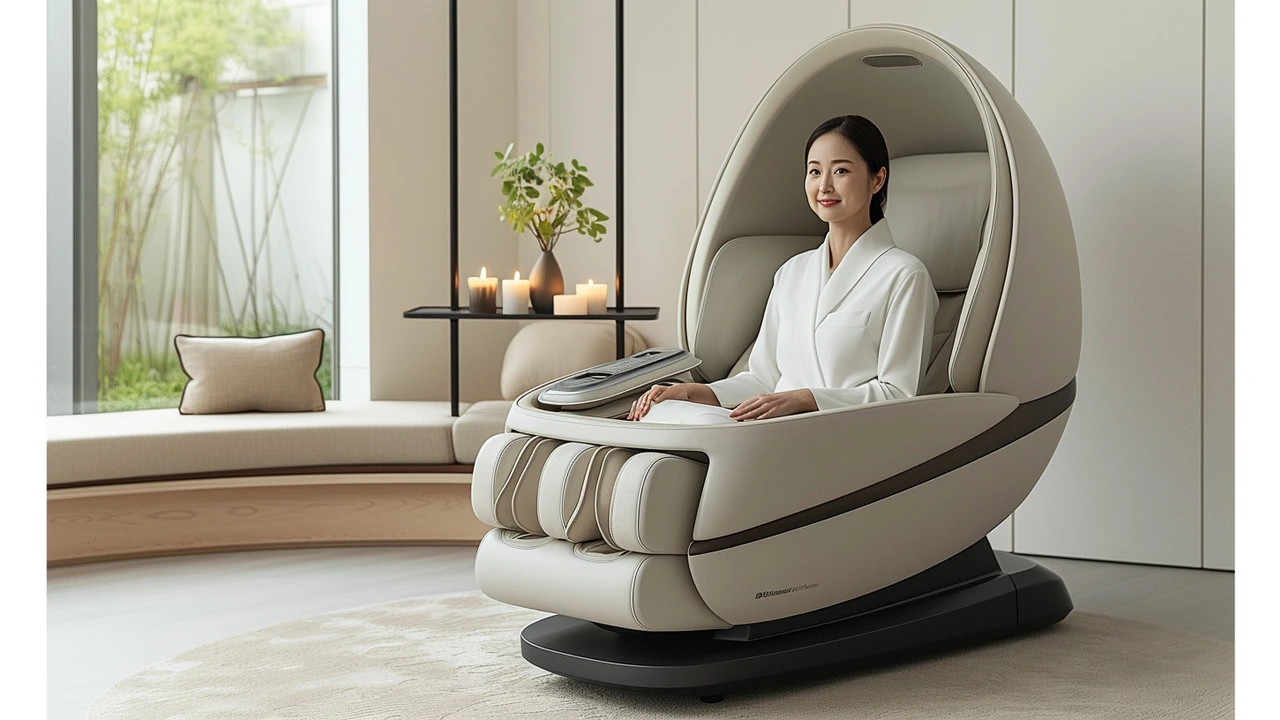The Science Behind Craniosacral Therapy: An In-depth Analysis
 Nov, 16 2023
Nov, 16 2023
Understanding Craniosacral Therapy
Among the various alternative medicine approaches, craniosacral therapy, abbreviated as CST, seems to be gathering a significant amount of attention. I must admit, I initially stumbled upon this topic while browsing the web in search of natural and non-invasive techniques to manage stress and insomnia. And since then, the concept has intrigued me enough to dive deep and dissect the science behind it. By definition, craniosacral therapy is a type of bodywork that uses gentle touch manipulation of the head, neck, and the bottom of the spine, which comprises the craniosacral system.
Here's where it becomes super interesting - the craniosacral system includes the brain and spinal cord, and hence playing with this system can influence our central nervous system. The idea is that this therapy can help restore the natural rhythmic movement found in all living systems. So, by manipulating the rhythm of the cerebrospinal fluid as it circulates around the brain and spinal cord, you are essentially fine-tuning the whole nervous system. You could compare it to tuning a giant bio-human orchestra—how cool is that?
Origins of Craniosacral Therapy
The foundations of craniosacral therapy originally rise from osteopathy, specifically from the findings of an osteopath named Dr. William Sutherland in the early 20th century. A revolutionary thinker, Sutherland witnessed the rhythmic movement of the cranial bones in the head and hypothesized that slight, detailed manipulations of these bones could help remedy a variety of ailments.
Years later, another osteopath named John Upledger further refined Sutherland's idea, giving birth to craniosacral therapy as we know it today. Upledger, like his predecessor, refused to follow the conventional understandings of the time and instead chose to delve into the complexities of the craniosacral system, leading to the development of this fascinating therapy. A couple of years back, I happened to visit the Upledger Institute where they offer craniosacral therapy and received a firsthand experience. And, I must say, life has never been the same since then!
The Underlying Science
The science behind craniosacral therapy is truly fascinating. As opposed to conventional medicinal approaches, which often focus on treating symptoms, CST targets the root cause behind various ailments. It does this by seeking to improve the overall health of the body's central nervous system. Now you might wonder, how does it achieve this? It all comes down to the rhythm. Just like the rhythm in music or dance, our body also has its unique, subtle rhythm—the craniosacral rhythm.
There's a fun fact I came across during my research. This craniosacral rhythm is so gentle and unnoticeable that it's often compared to the fluttering of a butterfly's wings. Talk about subtlety! From my experience, when the practitioner begins to tune into this rhythm, it's as if they are getting in sync with your body's intrinsic music. The therapy, then, is all about rebalancing this rhythm, enhancing the body's natural healing capabilities.
Craniosacral Therapy: A Walkthrough
A typical craniosacral therapy session is performed with you fully clothed, on a massage table. The therapist begins by lightly placing their hands on various parts of your body, tuning into the rhythm of your craniosacral system. This intimate connection may seem strange at first, but over time it becomes akin to having a conversation with your body, sans words.
The therapy often induces a deep sense of relaxation, similar to being in a state of wakeful dreaming. As someone who often struggles with calming the monkey mind, let me tell you, the tranquility I experienced during my first session was nothing short of transformative! Fun tip - try booking your appointment for the end of the day to enjoy profound sleep that night.
Efficacy and Applications
As with all alternative medicine treatments, the efficacy of craniosacral therapy is a point of debate. However, numerous recipients, myself included, report significant improvements in a variety of conditions following their sessions. These include but are not limited to stress, migraines, TMJ syndrome, and even some forms of neck and back pain.
Moreover, research on craniosacral therapy, though limited, does suggest its effectiveness in a range of conditions. A few years back, one of my loved ones was unfortunately diagnosed with fibromyalgia. After trying various traditional treatment methods, we turned to CST. Despite our skepticism, the improvements were remarkable and led to a sustained reduction in pain, fatigue, and depression levels.
My Take on Craniosacral Therapy
Given my personal experiences with craniosacral therapy, it would be uncouth of me to not whole-heartedly promote it as a worthwhile venture. To anyone in search of more natural, non-invasive therapies to enhance their body's inherent healing capabilities, I won't hesitate to recommend craniosacral therapy. However, it's always crucial to approach any new treatment method with an open mind, but also an inquisitive one.
Making sure to thoroughly research and speak with professionals in the field can provide a clearer understanding of what to expect. In my case, exploring craniosacral therapy has truly been a journey of learning and self-discovery that I'm still walking on. If you do decide to take up the therapy, be ready for an enlightening exploration of your body’s innate rhythms and healing potential.





